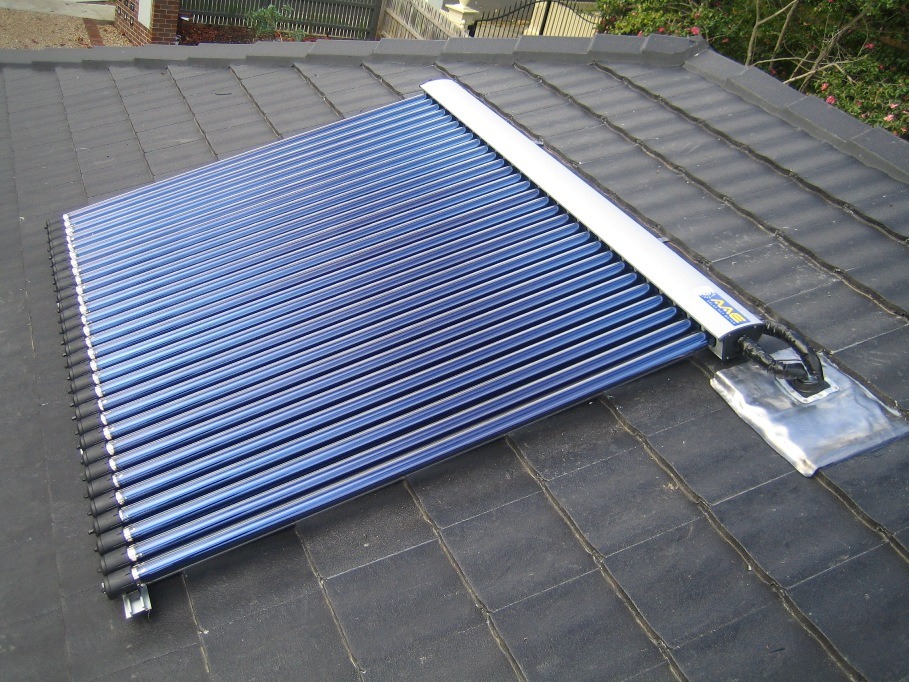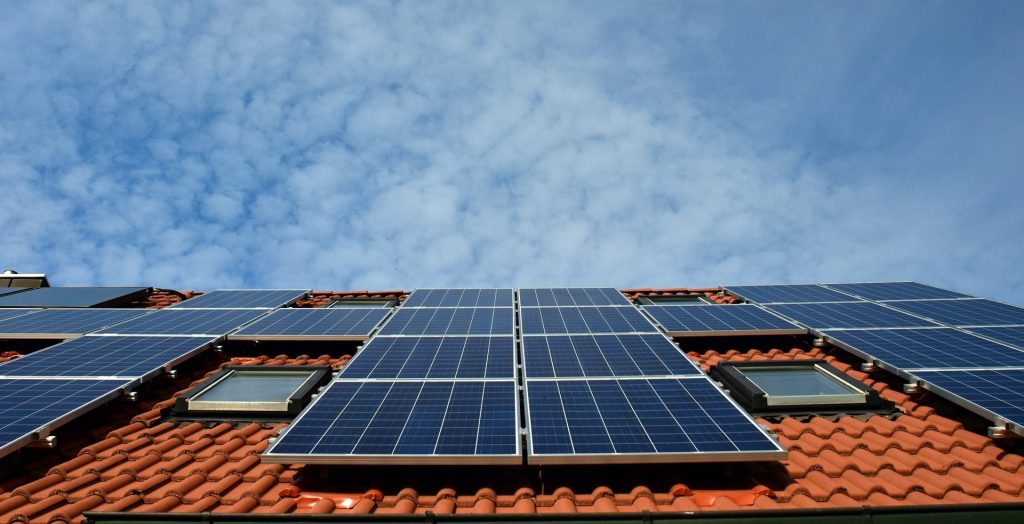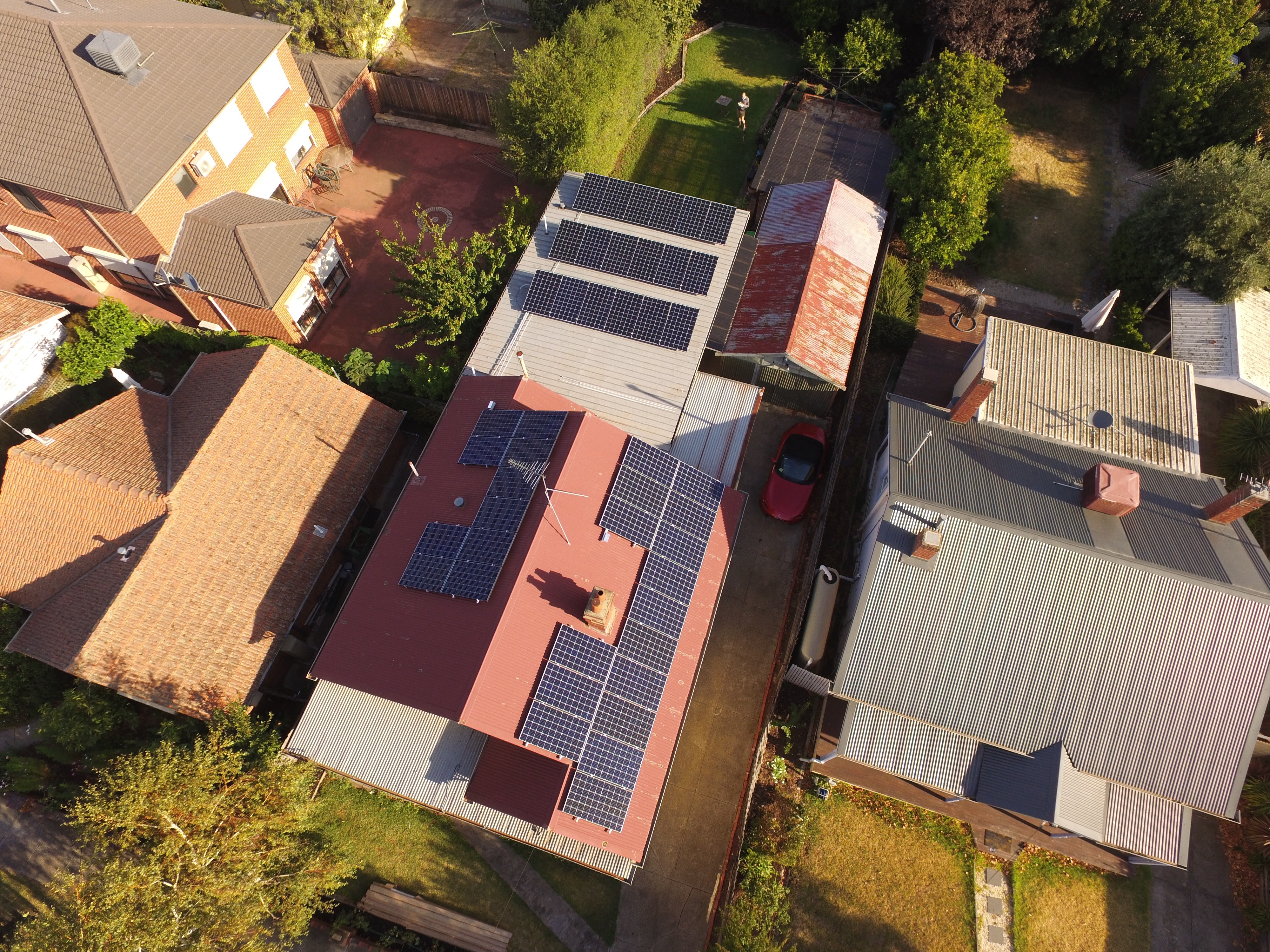
As the heart of a solar power system, the solar inverter is responsible for transforming the DC electricity produced by solar panels into the AC electricity typically used to power buildings.
Despite their significance, solar inverters are often misunderstood and underappreciated.
This post will introduce the concept of solar inverters and their role in photovoltaic systems. As a first step, we’ll discuss the characteristics of DC and AC currents and why the latter is required for running common household appliances.
In this next section, we’ll talk about how the solar inverter transforms the DC electricity produced by solar panels into AC power.
We’ll go over the pros and cons of string inverters, microinverters, and power optimizers, as well as other solar inverter types.
We will also talk about how crucial it is to keep tabs on your solar power system, and how data loggers and cloud-based platforms can help you do just that.
We’ll go over some best practices for maintaining and troubleshooting a solar inverter, as well as some suggestions for choosing the right solar inverter for a PV system.
This data will help homeowners and businesses choose the best solar power system for their needs and ensure that their inverter is functioning optimally, resulting in reliable and efficient power.
What are Solar Inverters?
When installing a solar power system in Australia, solar inverters are a must. They are in charge of transforming the DC electricity produced by solar panels into the AC electricity used to power homes and businesses.
Australia offers a wide selection of solar inverters, including string inverters, microinverters, and power optimizers.
When it comes to solar power systems, the most typical application is a string inverter, which is used in large-scale installations.
Because of their ability to improve overall system performance and permit more versatile panel placement, microinverters are quickly gaining favour in residential solar installations.
One other type of inverter aimed at maximising the effectiveness of solar panel installations is the power optimizer.
Australian solar inverters usually have more features than just the ability to change DC power into AC power.
By installing one of these systems, a home or business owner can keep tabs on the solar power system’s output, efficiency, and other metrics.
When it comes to installing solar power systems, including solar inverters, the Australian government provides homeowners and businesses with a number of rebates and tax credits.
If you’re a homeowner or small business owner interested in taking advantage of the tax breaks available through the Small-scale Renewable Energy Scheme (SRES), you can find a list of approved solar inverters on the Clean Energy Regulator’s website.
Overall, solar inverters are an essential part of a solar power system in Australia, helping both households and businesses generate clean, sustainable energy from the sun while cutting down on their energy bills and carbon footprin
How Does a Solar Inverter Work?
A solar inverter is a device that takes the solar panels’ DC (direct current) output and converts it to AC (alternating current) of 120V or 240V.
A solar inverter converts the direct current (DC) output from your solar panels into the alternating current (AC) needed by your home’s appliances.
To get more scientific, the sun hits your solar panels, also known as photovoltaic (PV) cells, which are composed of semiconductor layers of crystalline silicon or gallium arsenide.
Some of these layers are positively charged, while others are negatively charged, and they’re joined together at a junction.
When the sun is out, the PV cell receives energy from the sun thanks to the semiconductor layers. By bouncing electrons off of one another, this energy creates a direct current, which flows between the positive and negative layers (DC). Either a battery or an inverter is used to store the power for later use (this depends on the type of energy storage setup you have).
Even though your home needs alternating current, the electricity that gets supplied to the inverter is direct current. The power is snatched up by the inverter, sent through a transformer, and released as AC current.
By passing the DC via two or more transistors that turn on and off extremely quickly and feeding two different sides of the transformer, the inverter “tricks” the transformer into thinking that the DC is truly AC.
What Are the Various Kinds of Solar Inverters?
Single solar inverters can be used in systems with several solar panels. For others, each solar panel is connected to its own inverter.
Depending on the size of your solar panels and the amount of electricity they are producing, you can choose from a variety of various sized and rated solar inverters.
How large your solar array is, where you put your panels, and if you have batteries all play a role in determining which solar inverter is ideal for your home. Cost and expected lifespan are two other considerations.
Most solar inverters in Australia fall into one of these categories:
String Inverters
When it comes to household solar power systems, string inverters are the most popular and usually least expensive option. String inverters are used to link several solar panel strings to a single power source, or vice versa.
The string inverter is often installed on an exterior wall close to the main electrical panel.
Microinverters

Microinverters, which are even smaller than that, are roughly the size of a paperback book. They are attached to the solar panels themselves; one inverter per panel.
Microinverters enable this setup by tailoring the power output of each panel independently. Because of this, they are frequently employed in situations when solar panels are only partially shaded.
Central Inverters
Large-scale commercial solar systems and solar farms utilise central inverters. They have the appearance of a metal cabinet and are capable of managing systems with hundreds of kilowatts or megawatts of power.
Battery Inverters
Solar power stored in batteries can be used to power home appliances via inverters that transform DC current into AC current. They are a fantastic choice if you want to keep your solar panels and battery on separate systems or if you are retrofitting a battery into an existing solar power system.
Hybrid Inverters
Hybrid inverters facilitate the addition of a battery to a photovoltaic array. Multi-mode inverters are another name for them. Hybrid inverters manage the charging and draining of connected batteries using a process called DC coupling.
Understanding Photovoltaic Systems
As sunlight hits solar panels, that energy is transformed into usable power. A solar photovoltaic (PV) system is what you’re looking at. Solar photovoltaic (PV) technology provides Australian households and companies with clean, affordable energy at a low cost and with no carbon footprint.
Currently, the United States has the highest adoption rate of residential solar power, with one-quarter of all homes featuring solar panels (Clean Energy Regulator, 2020).
Installing solar panels is an excellent way to lessen your impact on the environment and save money on your monthly electricity bill.
There is a wide variety of solar PV systems on the market, and new innovations are being made all the time. The appropriate setup can provide your home with affordable power for years to come.
Solar photovoltaic (PV) systems consist mostly of the solar panels and the inverter.
Solar Panels
Via the photovoltaic effect, the silicon solar “cells” in each solar panel convert sunlight into DC electricity. Solar photovoltaic (PV) efficiency is the standard measure of effectiveness.
This is defined as the percentage of solar energy converted into usable electricity by the cell. All panels see an initial decline in output, although this should level off within the first year.
Many types of cells are typically found in homes, including:
- Monocrystalline cells have their silicon sliced from a single crystal (an ingot). High efficiency (between 15 and 20 percent) is achieved using these.
- For the production of polycrystalline cells, silicon is poured into moulds (cast ingots). There is a small efficiency difference (13%-17%) between polycrystalline cells and monocrystalline cells, however this can be made up for by installing more cells.
- When creating thin film cells, silicon is sprayed over a surface. When compared to monocrystalline or polycrystalline cells, these are less efficient and cost more. Once upon a time, amorphous silicon was the gold standard of thin film technology. As a result, thin film materials like cadmium telluride and copper indium gallium selenide are being used more frequently.
- Less common in Australia are building-integrated photovoltaic modules (BIPV), which use thin film technology to integrate PVs with materials like roofs, shingles or solar tiles, skylights, awnings, and façades. Façade systems work well in Northern European climes due to the sun’s lower angle of incidence.
Inverters
Whenever solar panels are producing direct current (DC), the inverter will take that DC and change it into alternating current (AC) that may be used in a building (normal household supply is 230V AC). Typically, homeowners will choose between the following four inverter types:
- Most residential solar power systems employ string inverters, which are standalone devices that are connected to a series of solar panels.
- Attached to each individual panel is a micro inverter, which is preferable than string inverters when certain panels are frequently shadowed.
- In order to save money or make better use of the energy, battery-only inverters are often combined with chargers.
- Hybrid inverters incorporate the functionality of both string inverters and battery inverters into a single device.
Photovoltaic System Types
A solar photovoltaic (PV) system can either be wired into the power grid (grid-connected systems) or it can operate independently (stand-alone systems). Battery storage is an option for several systems.
Grid-Connected Systems
One that is “grid-connected” can either take power from or put it into the larger power grid. When a household’s electrical needs exceed what the solar panels can provide, electricity is taken from the grid to ensure that there is always access to electricity.
When a home’s electricity needs are lower than what is produced by the solar panels, the excess power is delivered back into the grid.
In most cases, the homeowner will receive some sort of compensation (a “feed-in tariff”) for the electricity they’ve contributed to the power system.
Often referred to as “behind the metre,” this describes where the system is located after the electricity has been consumed.
This means that rather than getting power from the utility company, the home’s generator is located downstream from the metre.
Grid-interactive inverters and smart electricity metres will both be part of any system that feeds power into the grid. The smart metre can be set up to allow the full output of electricity from the renewable energy system to be sent into the grid at once (gross metering), or it can be set up to measure the amount of electricity sent into the grid after it has been used by appliances in the home (import/export or nett metering).
Generally, the ROI will increase with nett metering.
Backup storage is unnecessary for typical grid-connected systems. But, if there is a power outage on the grid, the home will be without electricity.
Powerline workers are protected from accidental electrocution by a grid-connected inverter that shuts down when the grid is disrupted.
An uninterruptible power supply (UPS) comprised of a grid-forming inverter and batteries can be custom-designed for a home if uninterrupted power delivery is essential.
This, however, raises the system price and may not even be possible in some areas.
Stand-alone Systems
When a home has a stand-alone system, it meets all of its energy needs independently, without tapping into the public power grid. Typically, a solar system consists of the following:
- solar panels
- panel inverter that changes the DC power from the panels into regular household current (DC independent systems are possible but unusual.)
- a second inverter-charger to regulate the frequency of the AC power to a consistent 50 hertz so that it can be stored in batteries. Another option is to use a hybrid inverter, which can switch between the two functions.
- battery
- controller for charging and discharging batteries, typically integrated inside the battery
- a backup generator, typically fueled by gasoline or diesel, used to either recharge the batteries when they run out or power the system when solar output is at or near zero.
Your home’s yearly and seasonal power needs can be met by carefully planning your home’s standalone power system to take into consideration the local annual climate.
Batteries are used to store excess solar power for usage when the renewable energy source is not available.
Be sure the battery bank can power your needs for the most of the year with only a little amount of backup power. When designing a system, it is recommended that you consult with experts who are knowledgeable in the field.
A backup generator should ideally be installed in an isolated space. In the event that it must be housed in the same room as the rest of the system, it should be placed as far away from the other components as feasible and covered with an enclosure ventilated to the outside.
There will be less of a chance of a fire starting due to a gasoline leak, and overheating and exhaust fume buildup will be prevented.
Make sure there is enough room around the generator for servicing. Store gasoline for the generator in a sealed, authorised container.

The solar inverter is the brains of the operation, changing the direct current (DC) electricity generated by solar panels into the alternating current (AC) electricity typically used to power buildings.
This article will explain what solar inverters are, how they work, the differences between direct current (DC) and alternating current (AC), and the benefits and drawbacks of using string inverters, microinverters, and power optimizers.
It will also provide guidance on how to select the ideal solar inverter for a given PV system and best practises for its upkeep and repair.
Finally, it will cover the best practises for monitoring the output, efficiency, and other statistics of a solar energy system. In order to provide alternating current (AC) to the home’s appliances, solar inverters are a crucial component of an Australian solar power system.
Households and businesses in Australia can take advantage of solar PV technology’s clean, cheap, carbon-free energy source. The solar panels and inverter make up solar photovoltaic (PV) systems, which transform sunlight into direct current (DC) electricity.
The standard efficiency metric for solar panels is photovoltaic (PV) efficiency, and while all panels experience a dip in output at the start, this should stabilise after the first year.
Many different cell types exist, including the less efficient and more expensive monocrystalline, polycrystalline, and thin film varieties.
Thin film technology is used by BIPV systems to integrate PVs with building components such as roofs, shingles or solar tiles, skylights, awnings, and façades.
A variety of inverters (including string and micro inverters, as well as battery-only and hybrid inverters, grid-interactive inverters, smart electricity metres, and nett metering) are used in solar power systems.
Micro inverters are installed with each panel, while grid-connected systems draw from or feed into the larger power grid.
Hybrid inverters are a single device that can perform the duties of both string inverters and battery inverters. The system’s return on investment improves with nett metering.
Normal grid-connected systems do not require backup storage, but in the event of a grid outage, the house will be without power.
Completely self-sufficient systems have no need to connect to the national electricity grid for any of their power requirements.
Surplus solar energy can be stored in batteries and used later, even if the sun isn’t shining, thanks to solar panels; in such cases, a backup generator can be used to either replenish the batteries or keep the system running entirely.
It is advised to seek professional advice when designing a system and to keep the generator’s gasoline in a secure, approved container.
